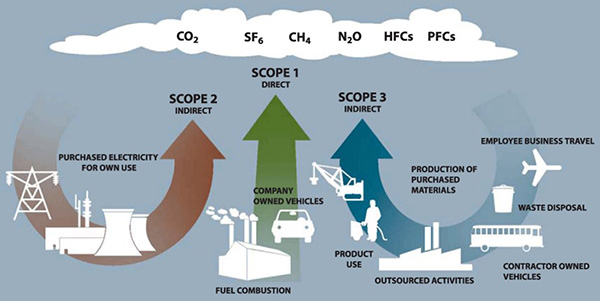Zero Emissions Noosa
After adopting an Emissions Reduction Policy in May 2016, Council is now implementing its Zero Emissions Strategy. The strategy sets an ambitious target of zero net emissions for the organisation by 2026.
So what does zero net emissions actually mean?
The first step towards achieving zero net emissions is to understand our organisation’s carbon footprint and where the individual sources of emissions are. Once we know what our emissions are we can set about reducing them through energy efficiency, switching to renewable energy sources and,finally, compensating for our residual emissions through the purchase of carbon offsets.

Image courtesy of World Resources Institute
Learn more about net zero emissions by viewing this youtube video
What is Council doing to achieve its NET ZERO EMISSIONS goal?
-
Noosa Council is an inaugural member of the Climate Council’s “Cities Power Partnership”.
The Cities Power Partnership is a free national program that exists to celebrate and accelerate the emission reduction and clean energy successes of Australian towns and cities. It’s a coalition of the willing – made up of mayors, councillors and communities who are committed to a sustainable, non-polluting energy future.
Local councils who join the partnership pledge to take 5 key actions across renewable energy, efficiency, transport and working together.
Noosa Council committed to the following actions at the January 19th Ordinary Meeting:
- Install renewable energy (solar PV and battery storage) on Council buildings.
- Support community facilities accessing renewable energy through incentives, support or grants.
- Implement landfill gas methane flaring or capture for electricity generation.
- Adopt best practice energy efficiency measures across all Council buildings, and support community facilities to adopt these measures.
- Encourage sustainable transport use (public transport, walking and cycling) through Council transport planning and design.
Noosa Council is an inaugural member Climate Council’s “Cities Power Partnership”.
-
Council approved the Zero Emissions Action Plan2017 – 2020 at the Ordinary Meeting of 18th January 2018. The action plan can be viewed in the General Committee Agenda of 15 January 2018 (starting page 116). The following provides an update on the major ZEN actions.
-
Each year Council calculates its carbon footprint in accordance with the National Carbon Offset Standard (NCOS).Council calculates its Carbon Footprint on an annual basis. The baseline year is 2015/16.
-
Council buildings andfacilities use electricity from the National Electricity Grid which is predominatly coal fired.
Council engaged ERM Power to conduct Level 2 energy audits across Council’s 7 major electricity consuming building and facilities. The audits identified a list of opportunities for Council to undertake to reduce its electricity consumption. The list of projects was compiled into a Marginal Abatement Cost Curve (MACC) which identified the most cost effective carbon reduction initiatives. Council is currently working through the llst of projects.
-
Council is currently upgrading our office and facilities lighting to LEDs. LEDs typically reduce electricity consumption by 30-50% compared to standard lights.
-
Air conditioning Council’s buildings comprises approximately 70% of its electrcity consunption. The Depot has recently upgraded its air conditioning system to to an invertor air conditioning system. The air conditioning system is zoned so that the it can be turned off in areas where ii is not being used.
Non inverter or Fixed speed air conditioning deliver a fixed amount of power via a fixed speed. This means the compressor has to stop and start to maintain the desired room temperature.
Inverter air conditioning system, varies the speed of the compressors, delivering precise cooling or heating power as required.The invertor air conditioning has reduced The Depot’s energy consunption by at least 30%.
Keeping the air conditioning to 24 degrees reduces energy consumption by up to 10%
-
The emissions from the Council controlled landfill comprise over 65% of Council’s total carbon footprint. Further information is required to enable a comprehensive emissions reduction strategy to be developed for the landfill which will consider the cost-benefit analysis of further emission reductions and offset opportunities.
-
Council has operational requirements for a variety of vehicles, plant and equipment. The emissions from the consumption of petrol, diesel and LPG, during the operation of this equipment adds to Council’s carbon footprint. Council has recently purchased 3 Toyota Prius C hybrid cars as part of its fleet. Council will continue to review and assess alternative fuel options as they become viable within Australia. Council has replaced much of its petrol driven portable equipment with rechargeable battery options.
